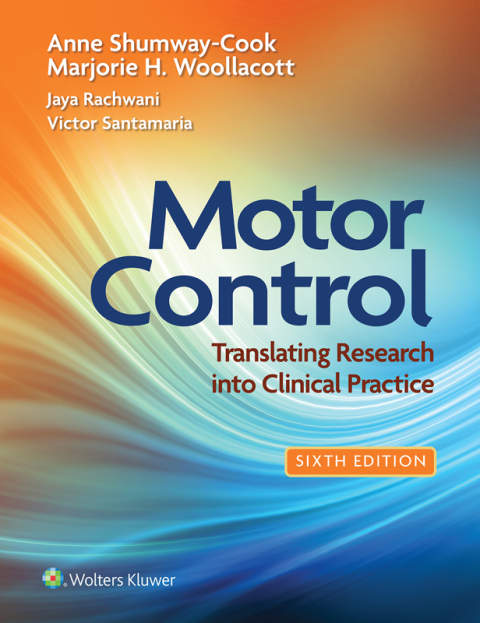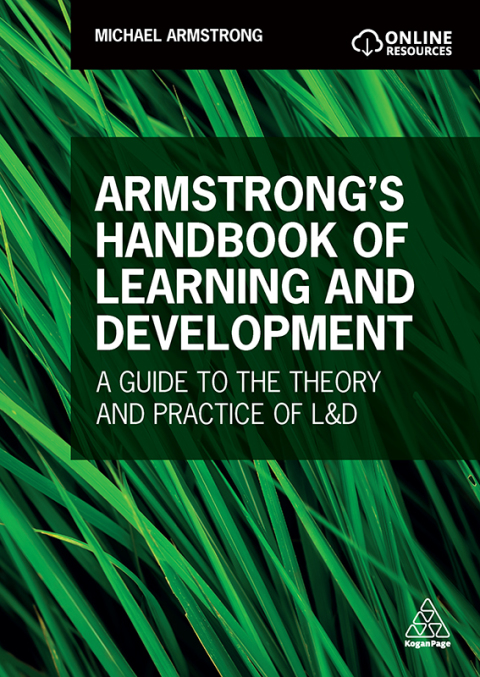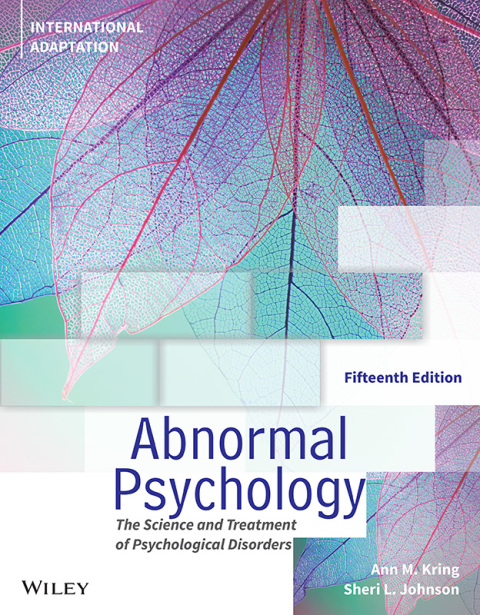Description
Efnisyfirlit
- Cover
- Title Page
- Copyright
- Dedication
- Preface
- Content
- PART I: THEORETICAL FRAMEWORK
- 1 Motor Control: Issues and Theories
- Introduction
- What Is Motor Control?
- Why Should Therapists Study Motor Control?
- Understanding the Nature of Movement
- Individual Systems Underlying Motor Control
- Task Constraints on Movement Control
- Environmental Constraints on Movement Control
- The Control of Movement: Theories of Motor Control
- Value of Theory to Practice
- Reflex Theory
- Hierarchical Theory
- Motor Programming Theories
- Systems Theory
- Ecological Theory
- Which Theory of Motor Control Is Best?
- Parallel Development of Clinical Practice and Scientific Theory
- Neurologic Rehabilitation: Reflex-Based Neurofacilitation Approaches
- Task-Oriented Approach
- Case Studies
- Summary
- Answers to Lab Activity Assignments
- 2 Motor Learning and Recovery of Function
- Introduction to Motor Learning
- What Is Motor Learning?
- Nature of Motor Learning
- Early Definitions of Motor Learning
- Broadening the Definition of Motor Learning
- Relating Performance and Learning
- Attention and Motor Learning
- Forms of Learning
- Basic Forms of Long-Term Memory: Nondeclarative (Implicit) and Declarative (Explicit)
- Theories of Motor Learning
- Schmidt’s Schema Theory
- Ecological Theory
- Theories Related to Stages of Learning Motor Skills
- Fitts and Posner’s Three-Stage Model
- Bernstein’s Three-Stage Approach to Motor Learning: Mastering Degrees of Freedom
- Gentile’s Two-Stage Model
- Stages of Motor Program Formation
- Practical Applications of Motor Learning Research
- Practice Levels
- Feedback
- Practice Conditions
- Recovery of Function
- Concepts Related to Recovery of Function
- Factors Affecting Recovery of Function
- Preinjury Neuroprotective Factors
- Postinjury Factors
- Summary
- Answers to Lab Activity Assignments
- 3 Physiology of Motor Control
- Introduction and Overview
- Motor Control Theories and Physiology
- Overview of Brain Function
- Neuron: The Basic Unit of the CNS
- Sensory and Perceptual Systems
- Somatosensory System
- Visual System
- Vestibular System
- Action Systems
- Motor Cortex
- Higher-Level Association Areas
- Cerebellum
- Basal Ganglia
- Mesencephalon and Brainstem
- Summary
- 4 Physiological Basis of Motor Learning and Recovery of Function
- Introduction
- Defining Neural Plasticity
- Learning and Memory
- Localization of Learning and Memory
- Plasticity and Learning
- Plasticity and Nondeclarative (Implicit) Forms of Learning
- Procedural Learning (Skills and Habits)
- Plasticity and Declarative (Explicit) Forms of Learning
- The Shift from Implicit to Explicit Knowledge
- The Shift from Explicit to Implicit Memory
- Complex Forms of Motor Learning
- Acquisition of Skill: The Shift to Automaticity
- Summary of Forms of Learning
- Neural Plasticity and Recovery of Function
- Conceptualizing Recovery
- Axonal Damage: Effects on Neurons and Neighboring Cells
- Early Transient Events That Depress Brain Function
- Axonal Regeneration: Difference in the Peripheral versus Central Nervous Systems
- CNS Response to Injury
- Changes in Cortical Maps after Lesions and during Recovery of Function
- Strategies to Enhance Neural Plasticity and Cortical Reorganization
- Clinical Implications of Research on Neural Plasticity and Recovery of Function in Acquired Brain Injury
- Neural Plasticity and Neurodegenerative Disease
- Neural Plasticity and Parkinson’s Disease
- Clinical Implications of Research on Neural Plasticity and Recovery of Function in PD
- Summary
- 5 Constraints on Motor Control: An Overview of Neurologic Impairments
- Introduction: Signs and Symptoms of Pathophysiology of Motor Control
- Classifying Impairments Associated with Central Nervous System Lesions
- Signs versus Symptoms
- Positive versus Negative Signs and Symptoms
- Primary versus Secondary Effects
- Impairments in the Action Systems
- Motor Cortex Deficits
- Motor Impairments Associated with Subcortical Pathology
- Secondary Musculoskeletal Impairments
- Impairments in Sensory Systems
- Somatosensory Deficits
- Visual Deficits
- Vestibular Deficits
- Pathology of Higher-Order Association Cortices: Spatial and Nonspatial Impairments
- Right Hemisphere Spatial Deficits
- Right Hemisphere Nonspatial Deficits
- Clinical Management of Impairments in the Action (Motor) Systems
- Motor Cortex and Corticospinal Tract Impairments
- Clinical Management of Cerebellar and Basal Ganglia Impairments
- Clinical Management of Musculoskeletal Impairments
- Clinical Management of Impairments in the Sensory Systems
- Somatosensory Impairments
- Visual Impairments
- Vestibular Impairments
- Clinical Management of Impairments in the Perceptual and Cognitive Systems
- Spatial Deficits: Hemineglect
- Nonspatial Cognitive Deficits
- Summary
- 6 A Conceptual Framework for Clinical Practice
- Introduction
- Components of a Conceptual Framework for Clinical Practice
- Models of Practice
- Models of Functioning and Disability
- Hypothesis-Oriented Clinical Practice
- Theories of Motor Control and Learning
- Evidence-Based Clinical Practice
- Applying a Conceptual Framework to Clinical Practice
- Developing a Personal Conceptual Framework for Clinical Practice
- Task-Oriented Approach to Examination
- Examination of Functional Activities and Participation
- Examination at the Strategy Level
- Examining Impairments of Body Structure and Function
- Task-Oriented Approach to Intervention
- Recovery Versus Compensation
- Summary
- Answers to Lab Activity Assignments
- PART II: POSTURAL CONTROL
- 7 Normal Postural Control
- Introduction
- Defining Postural Control
- A Systems Framework for Postural Control
- Motor Systems in Postural Control
- Steady-State Balance
- Reactive Balance Control
- Proactive (Anticipatory) Balance Control
- Sensory and Perceptual Systems in Postural Control
- Sensory Inputs for Steady-State Balance
- Sensory Inputs for Reactive Balance
- Clinical Applications of Research on Sensory and Perceptual Aspects of Postural Control
- Cognitive Systems in Postural Control
- Clinical Applications of Research on Cognitive Aspects of Postural Control
- Neural Subsystems Controlling Postural Orientation and Stability
- Spinal Contributions
- Brainstem Contributions
- Basal Ganglia and Cerebellar Contributions
- Summary
- Answers to Lab Activity Assignments
- 8 Development of Postural Control
- Introduction
- Postural Control and Development
- Motor Milestones and Emerging Postural Control
- Theories of Developing Postural Control
- Reflex/Hierarchical Theory
- Systems Theory
- Development of Postural Control: A Systems Perspective
- General Movements in Infants
- Emerging Head Control
- Emergence of Independent Sitting
- Transition to Independent Stance
- Refinement of Postural Control
- Cognitive Systems in Postural Development
- Summary
- 9 Aging and Postural Control
- Introduction
- Factors Contributing to Aging
- Interactions between Primary and Secondary Factors
- Heterogeneity of Aging
- Behavioral Indicators of Instability
- Defining Falls
- Risk Factors for Falls
- Age-Related Changes in the Systems of Postural Control
- Motor Systems
- Changes to Steady-State Balance
- Changes in Reactive Balance Control
- Aging in the Sensory or Perceptual Systems
- Changes in Individual Sensory Systems
- Adapting Senses for Postural Control
- Cognitive Issues and Posture Control
- A Case Study Approach to Understanding Age-Related Postural Disorders
- Summary
- Answers to Lab Activity Assignments
- 10 Abnormal Postural Control
- Introduction
- Falls in Persons with Neurologic Pathology
- Problems in the Motor Systems
- Impaired Steady-State Balance
- Impaired Reactive Balance
- Impaired Anticipatory Postural Control
- Problems in the Sensory/Perceptual Systems
- Sensory Problems Affecting Steady-State Balance
- Sensory Problems Affecting Reactive Balance
- Sensory Problems Affecting Anticipatory Balance
- Perceptual Problems Affecting Postural Control
- Clinical Implications of Research on Impaired Sensation/Perceptions and Postural Control
- Problems in Cognitive Systems
- Balance and Falls Self-Efficacy
- Impaired Postural Stability and Dual-Task Interference
- A Case Study Approach to Understanding Postural Dyscontrol
- Jean J and Genise T: Postural Problems following Cerebral Vascular Accident
- Mike M: Postural Problems in Parkinson’s Disease
- John C: Postural Problems in Cerebellar Disorders
- Thomas L: Postural Problems in Spastic Diplegic CP
- Malachi: Postural Problems in Severe Athetoid/Spastic CP
- Sue: Postural Problems in Multiple Sclerosis
- Summary
- 11 Clinical Management of the Patient with a Postural Control Disorder
- Introduction
- Conceptual Framework for Balance Rehabilitation
- Examination
- Safety—The First Concern
- Examining the Effect of Balance on Participation
- Examining Balance in Functional Activities
- Assessing Strategies for Balance
- Examination of Underlying Impairments
- Evaluation: Interpreting the Results of the Examination
- Task-Oriented Balance Rehabilitation
- Motor System
- Sensory Systems
- Cognitive Systems
- Putting It All Together
- Research Evidence for a Task-Oriented Approach to Balance Rehabilitation
- Improving Participation—Evidence-Based Fall Prevention
- Summary
- Answers to Lab Activity Assignments
- PART III: MOBILITY FUNCTIONS
- 12 Control of Normal Mobility
- Introduction
- Mobility in the International Classification of Functioning, Disability and Health Framework
- Motor Systems and Gait
- Essential Requirements of Locomotion: Progression, Postural Control, and Adaptation
- Characterizing Steady-State Gait
- Adaptation of Gait: Contributions of Reactive and Proactive Balance Control in Gait
- Initiating Gait
- Control Mechanisms for Gait
- Pattern Generators for Gait
- Descending Influences
- Musculoskeletal Contributions to Gait
- Sensory Systems and the Control of Gait
- Somatosensory Systems
- Vision
- Vestibular System
- Cognitive Systems and Gait
- Dual-Task Performance during Steady-State Gait
- Dual-Task Performance during Obstacle Crossing
- Stair Walking
- Ascent
- Descent
- Adapting Stair-Walking Patterns to Changes in Sensory Cues
- Mobility Other Than Gait
- Transfers and Bed Mobility
- Summary
- Answers to Lab Activity Assignments
- 13 Development of Mobility
- Introduction
- Development of Motor Systems and Gait
- Development of Steady-State Gait
- Development of Adaptation
- Expanding the Repertoire of Steady-State Gait Patterns: Run, Skip, Hop, and Gallop
- Sensory Systems
- Cognitive Systems
- Development of Other Mobility Skills
- Development of Rolling
- Development of Supine to Stand
- Summary
- Answers to Lab Activity Assignments
- 14 Aging and Mobility
- Introduction
- Gait Dysfunction: Aging or Pathology?
- Motor Systems and Gait
- Age-Related Changes in Steady-State Gait
- Age-Related Changes in Adaptation of Gait: Reactive and Proactive Balance
- Role of Pathology in Gait Changes in Older Adults
- Age-Related Changes in Sensory Systems and Gait
- Somatosensation
- Vision
- Vestibular
- Age-Related Changes in Cognitive Systems and Gait
- Age-Related Changes in Dual-Task Performance during Steady-State Gait
- Age-Related Changes in Dual-Task Performance during Obstacle Crossing
- Cognitive Influences on Gait: Fear of Falling in Older Adults
- Age-Related Changes in Other Mobility Skills
- Gait Initiation and Backward Gait
- Stair Walking
- Sit-to-Stand
- Rising from a Bed
- Supine to Standing
- Comparing Gait Characteristics of Infants and Older Adults: Testing the Regression Hypothesis
- A Case Study Approach to Understanding Age-Related Changes in Mobility
- Summary
- Answers to Lab Activity Assignments
- 15 Abnormal Mobility
- Introduction
- Classification Systems
- Motor Systems and Abnormal Gait
- Paresis or Weakness
- Spasticity
- Loss of Selective Control and the Emergence of Abnormal Synergies
- Coordination Problems
- Musculoskeletal Impairments
- Impaired Adaptation of Gait: Contributions of Impaired Reactive and Proactive Balance Control
- Sensory Systems and Abnormal Gait
- Somatosensory Deficits
- Visual Deficits
- Vestibular Deficits
- Perceptual Problems Affecting Gait
- Cognitive Systems and Impaired Gait
- Impaired Dual-Task Walking
- What Factors Limit Participation in the Mobility Domain?
- Disorders of Mobility Other than Gait
- Gait Initiation
- Stair Walking
- Transfers and Bed Mobility
- A Case Study Approach to Understanding Mobility Disorders
- Jean J and Genise T: Stroke
- Mike M: Parkinson’s Disease
- John C: Degenerative Cerebellar Injury
- Sue: Multiple Sclerosis
- Thomas: Spastic Diplegic Cerebral Palsy
- Summary
- 16 Clinical Management of the Patient with a Mobility Disorder
- Introduction
- A Task-Oriented Approach to Examination
- Measuring Participation: Mobility Performance in the Home and Community Contexts
- Standardized Measures of Walking Capacity
- Examining the Gait Pattern
- Examination at the Impairment Level
- Measuring Mobility: Do We Really Need All These Tests and Measures?
- Transition to Treatment
- Setting Goals
- Task-Oriented Approach to Locomotor Training
- Interventions at the Impairment Level
- Intervention at the Strategy Level: Improving the Gait Pattern
- Training Adaptation: Complex Walking Tasks
- Research Supporting Locomotor Training in Specific Patient Populations
- Improving Participation and Reducing Mobility Disability
- Retraining Other Mobility Skills
- Stair Walking
- Sit-to-Stand
- Importance of Varying Task and Environmental Demands
- Summary
- Answers to Lab Activity Assignments
- PART IV: REACH, GRASP, AND MANIPULATION
- 17 Normal Reach, Grasp, and Manipulation
- Introduction
- Movement Control Principles
- Feedforward versus Feedback Control of Movement
- Locating a Target
- Eye–Head–Trunk Coordination
- Interactions between Eye Movements and Hand Movements
- Reach and Grasp
- Kinematics of Reach and Grasp
- Neural Control of Reach and Grasp
- Sensory Systems
- Motor Systems
- Grasping
- Classification of Grasping Patterns
- Anticipatory Control of Grasping Patterns: Precision Grip Formation
- Grasp and Lift Tasks
- Coordination of Reach and Grasp
- General Principles of Neural Control of Reach and Grasp
- Invariant Features of Movement: Motor Programs
- Reaction Times for Reach and Grasp
- Fitts’s Law
- How Does the Nervous System Plan Movements? Muscle Coordinate, Joint Angle Coordinate, and End Point Coordinate Strategies
- Distance versus Location Programming Theories
- Interference between Reaching and the Performance of Secondary Cognitive Tasks
- Summary
- Answers to Lab Activity Assignments
- 18 Reach, Grasp, and Manipulation: Changes across the Life Span
- Introduction
- Principles Underlying the Development of Reaching Behaviors
- Role of Reflexes in the Development of Reaching Behaviors
- Reaching Behaviors: Innate or Learned?
- Locating a Target: Eye–Head Coordination
- Shifting Gaze
- Tracking Object Movements
- Development of Visual Pathways for Reaching
- Eye–Head–Hand Coordination Development
- Reach and Grasp
- Motor Components
- Sensory Components
- Grasp Development
- When Do Children Start Using Anticipatory Control in Grasping and Lifting Objects?
- Adaptation of Grip Forces
- Learning to Reach for and Grasp Moving Objects (Catching)
- Cognitive Components
- The Role of Experience in the Development of Eye–Hand Coordination
- Reaction Time Reaching Tasks
- Fitts’ Law
- Changes in Older Adults
- Reaching: Changes with Age
- Grasping: Changes with Age
- Reach–Grasp Adaptation: Changes with Age
- Compensation and Reversibility of Decrements in Reaching Performance
- A Case Study Approach to Understanding Age-Related Changes in Reach, Grasp, and Manipulation
- Summary
- Answers to Lab Activity Assignments
- 19 Abnormal Reach, Grasp, and Manipulation
- Introduction
- Target Location Problems
- Visual Deficits and Object Localization
- Problems with Eye−Head−Hand Coordination
- Problems with Reach and Grasp
- Impairments of Reach
- Problems with Grasp
- Problems with In-Hand Manipulation
- Problems with Release
- Interlimb Coupling and Bimanual Tasks
- Reach and Grasp in the Ipsilesional Nonhemiparetic Limb
- Apraxia
- A Case Study Approach to Understanding Upper-Extremity Disorders
- Jean J and Genise T: Reach-and-Grasp Problems Following Cerebrovascular Accident
- Mike M: Reach-and-Grasp Problems in Parkinson’s Disease
- John C: Reach-and-Grasp Problems Following Cerebellar Pathology
- Thomas: Reach-and-Grasp Problems in Cerebral Palsy
- Malachi: Reach-and-Grasp Problems in Severe Dystonic/Spastic Cerebral Palsy
- Sue: Reach-and-Grasp Problems in Multiple Sclerosis
- Summary
- 20 Clinical Management of the Patient with Reach, Grasp, and Manipulation Disorders
- Introduction
- Examination
- Examining the Effect of Prehension on Participation
- Examining Prehension in Functional Activities
- Examination of Underlying Impairments
- Evaluation: Interpreting the Results of the Examination
- Long-Term Goals
- Short-Term Goals
- Client-Identified Goals
- Intervention for Sensorimotor Strategies
- Interventions at the Functional Level
- Improving Participation
- Summary
- Answers to Lab Activity Assignments
- References
- Index






Reviews
There are no reviews yet.